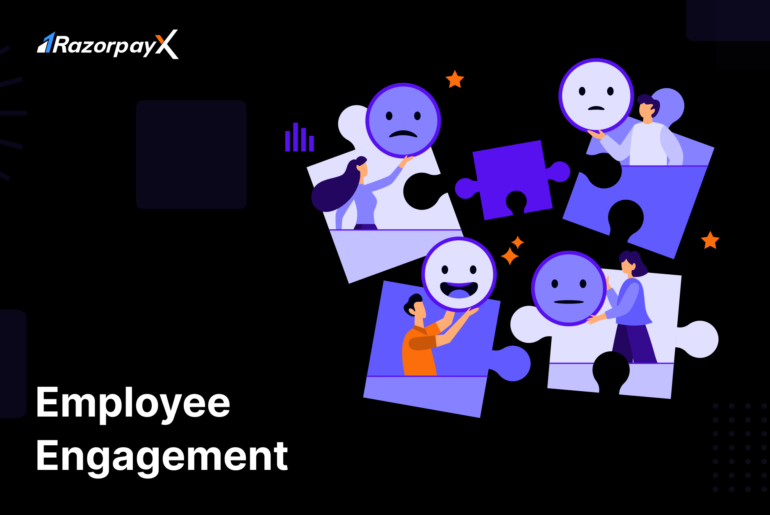What is Employee Engagement?
Employee engagement is a measure of how emotionally invested employees are in their tasks and the company’s overall goals.
Engaged employees are intrinsically motivated. They feel enthusiastic to work not just for a salary or a bonus, but because they derive genuine satisfaction and fulfilment from their work.
Needless to say, employee engagement should be one of the core, crucial goals of any HR department.
Importance of Employee Engagement
The cornerstone of employee engagement is emotional investment. While financial compensation remains one of the chief motivators for most employees, the difference between an employee who works and one who works hard lies in employee engagement.
Engaged employees also tend to stay longer with their employer, reducing turnover rates and improving the business’s overall financial health.
The last major benefit of investing in employee engagement is the goodwill that comes with it. Happy employees will spread the word among their peers – once your business becomes known as a great place to work, talent will flock to you.
Impact of Employee Engagement on Profits
One of the major contributors to employee engagement is employee experience. The employee’s perception of the workplace, its leaders and the people make up an employee experience.
According to IBM’s report on The Financial Impact of a Positive Employee Experience, organizations that were in the top 25% of measured employee experience reported a nearly 3x higher return on assets compared to businesses in the bottom quartile.
The same companies also reported double the return on sales compared to bottom-quartile companies.
Read more: 9 Ways to Retain Employees Forever
Factors Affecting Employee Engagement
Following is a list of the top factors that affect employee engagement.
- A sense of belonging: According to Deloitte’s Global Human Capital Trends survey, a sense of belonging was voted the top human capital issue in 2023. 79% of the respondents said that ensuring a sense of belonging in the workplace was important for business success.Belonging can be defined as the feeling of being accepted and treated fairly and with respect. Being accepted into the informal social groups that form in an organization is also an important part of belonging.
- Workplace culture: Interorganizational culture is a complex concept. It can be loosely defined as the set of values and attitudes in a workplace – the connection employees have with each other and the organization.There is a strong positive correlation between workplace culture and employee engagement. When employees feel comfortable in the workplace and among their peers, they are more likely to be engaged in their work.
- Leadership: The attitudes shown by leaders and managing executives of the company reflect on the organization as a whole. Employees who trust and respect their leaders will trust and respect their organization as an extension.A 2020 research study by Dale Carnegie showed that trust in leadership drives employee engagement. Transparent, fair and equitable leaders drive trust for other leaders and for the organization as a whole.
- Job satisfaction & fulfilment: The sense of accomplishment and satisfaction derived from doing work plays a pivotal role in employee engagement. When the work is aligned with the employee’s values and talents, they feel more attached and engaged to the work and the organization.
- Opportunities for development: Employees who feel like they have opportunities to learn and grow are more likely to be engaged in their work. This is because they feel like their skills are valued and that the company is invested in their future.Opportunities for growth and development can come in many forms, such as training and development programs, mentorship opportunities, and opportunities to take on new challenges.
- Work-life balance: Employees who feel like they have a healthy work-life balance are more likely to be engaged in their work. This is because they are not feeling burned out or stressed and can recharge and come to work with renewed energy.Work-life balance can be achieved by offering flexible work arrangements, such as telecommuting or hybrid work models, or encouraging employees to take time off to recharge.
Strategies to Improve Employee Engagement
Here are a few ways for leaders to engage employees and build worker morale.
Show your employees you truly care
Google, one of the biggest companies in the world, spends a sizeable chunk of its budget every year on employee engagement programs. Google employees enjoy exclusive perks like free organic food cooked by specially-hired chefs, free health check-ups, in-office nap pods, free haircuts and more. These perks show employees that the organization truly cares about them.
Be honest and transparent
Honest leaders foster honest employees and drive trust in the organization’s direction. It is important to keep employees in the know and gain their trust, especially in times of crisis.
When leaders demonstrate transparency, authenticity, and openness, they cultivate trust, credibility, and a sense of psychological safety among employees. This, in turn, leads to increased engagement, productivity, and organizational success.
Empower and Trust Employees
Provide employees with the autonomy and authority to make decisions within their scope of work. Trust their abilities and encourage them to take ownership of their tasks. Empower them to solve problems creatively and contribute to the organization’s success.
Netflix is known for its open and transparent culture, where employees are encouraged to share their opinions and ideas freely. CEO Reed Hastings famously published a memo titled “A Culture of Freedom and Responsibility,” outlining the company’s values and encouraging employees to make decisions independently and act transparently.
Recognize and appreciate employees
Regularly acknowledge and appreciate employees for their contributions, both big and small. Implement formal recognition programs, such as employee of the month, and offer informal gestures of appreciation, such as handwritten notes or verbal praise.
Formal recognition programs, like awards and ESOPs to award top talent with cash or benefits, are also a great way to engage employees.
Regular feedback and continuous improvement
Use surveys, focus groups and one-on-one conversations to keep a check on the pulse of the organization and identify problem areas. This also creates a platform for employees to communicate problems and suggestions.
Automated Employee Management
RazorpayX Payroll is India’s ONLY fully automated payroll & HR software that automatically calculates and disburses employee salaries. It simplifies manual tasks so that you can focus on strategic work like performance management.
- Direct salary calculations & transfers to employees, interns and contractors
- Automatic filing & payment of compliances like PT, PF, TDS and ESIC
- HR Management from onboarding to exit, powered by Zoho People
- Instant reimbursement claims and payslip generation on WhatsApp
- Exclusive employee insurance plans from Plum at 70% lower costs





